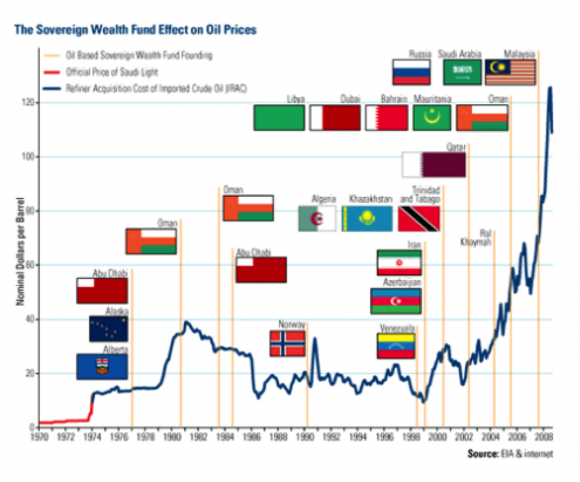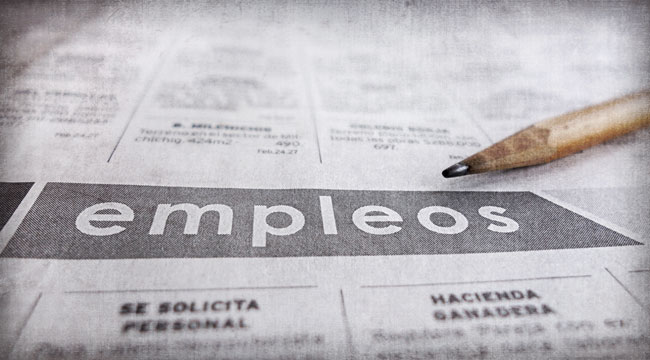Remember When... Spanish Jovenes Unemployment Reached 20%?
Welcome to the Daily Reckoning’s “Remember When” series. Each day we turn back the clock and take a look at our musings from five and ten years ago to the day.
Not only will you be shocked at just how quickly time passes (yes, 2005 was a decade ago), but you can see what we predicted correctly, what we missed the mark on, and how history does, in fact, have a habit of rhyming.
June 3, 2010 in The Daily Reckoning…
In the last two decades leading up to 2010 in Mediterranean Europe, a new social group had emerged, called jovenes, or “youngsters.” These jovenes were usually male, aged 25-35, lived with parents, and remained in a perpetual state between graduation and their first job.
Jaime Levy Moreno, writing for us at the time, lumped them together and called them the “Atlas generation,” young people with the “weight of the world on their shoulders, who are going to be the ones who pay for the economic sins of their parents.” Spanish unemployment had been rising dramatically, reaching a record of around 20% at the time this piece was written.
Reasons? Labor costs were high for employers, which was a consequence of strict laws that protect workers, four weeks minimum vacation time, and excessive employer taxes, among many other things. Not to mention, since joining the eurozone, the Spanish government has undertaken an increasingly large debt, financed by the continual issuance of new bonds. This borrowing only proved to strain Spain’s public finances, lower its bond rating, and reduce the demand investors have to continue funding this deficit spending.
If current trends were to continue, suggested Moreno, within a few years, each employee in Spain will have to pay for one pensioner on social security. 40 years prior, ten employees took care of one pensioner through their social-security contributions.
Moreno’s conclusion: The only way to solve this problem would be to dramatically lower taxes, especially employment taxes, which would encourage employers to offer more jobs and employees to have larger families, and contribute to the work force.
Five years on it’s a suggestion the Spanish might still want to consider…
“Should Investors Boycott the Stock Market?”
In light of the then-recently released 2004 Federal Reserve Open Market Committee transcripts, our friend Frederick Sheehan reported how the Fed had distorted the stock market for the benefit of favored institutional investors.
All of this under the guise of trying to prevent the economy from deflating, of course. Instead the goal was to inflate asset prices and work with hedge funds and pushing housing prices up.
In 2010, when Sheehan was writing, the federal government’s interference in markets was considered ten-fold, or maybe even one-hundred-fold, greater than in 2004. And as you might remember, those distortions in 2004 went hand-in-hand with the collapse in 2007. Given the Fed’s iron grip on markets at present, the imbalances are even greater, today.
Sheehan believed there were four sources of phony prices:
First, interest rates are distorted. At one percent (and less) speculators gamble and push up asset prices.
Second, is the housing market. It does not exist. The authorities have warned us. The latest was David Stevens, head of the Federal Housing Administration, who told an audience on May 24, 2010, the housing market is a “government-financed market” that is “purely on life-support, sustained by the Federal government.” House prices will sink when the government runs out of lifeboats.
Third, the authorities have handed the stock market to institutions where the computers buy and sell. The Financial Times reported that only 3% of stock market trading is by retail customers. Tradebot, in Kansas City, Missouri, holds stocks for an average of 11 seconds. It made money every day for four years.
Fourth, the Federal Reserve is manipulating the currency markets, as Rainer Bruederle, German finance minister, disclosed on May 28.
Ultimately, Frederick concluded that Investors needed protection on the downside and exposure to the upside, and, at the time of writing, the prospect of a stock market crash looked more likely than ever.
“Why Government Intervention Makes Investing Even Harder”
Joel Bowman bemoaned the impact of government’s intervention on investors.
The government, if you haven’t already noticed, is constantly busying itself distorting the markets. This is today as it was in 2010. And also like 2010, the government is still stymying the very industries, business and people that they’ve set out to protect in the first place.
According to Henry Hazlitt, this is known as the “fallacy of overlooking secondary consequences,” which means, “This is the persistent tendency of men to see only the immediate effects of a given policy, or its effects only on a special group, and to neglect to inquire what the long-run effects of that policy will be not only on that special group but on all groups.”
Joel cited the example of minimum wage, which would seem intuitive that raising the mandatory hourly salary of low-income workers would positively impact the less privileged members of the workforce. It’s a compelling, politically expedient concept for those seeking re-election, but unfortunately, most often and for most low-income workers, this warm and fuzzy policy actually does them more harm than good.
Hear, hear.
It was a busy time in the resource sector…
With the market still reeling from the BP Oil Spill, Byron King, declared that oil stocks were “way oversold,” and a huge rally was about to begin. People who panicked and dumped their shares the day prior ended up missing out big-time. Looking back, and to Bryon’s credit, the Philadelphia Oil Service Index (OSX) jumped over 65% in the five months after Byron said that.
Of note too, the Obama administration implemented a six-month ban on deepwater drilling. But Byron predicted it would last more like 18 months. He wasn’t right about that — the ban was lifted six months later, in February 2011, just as the administration said it would. But permits granted for deepwater drilling were down 71% because few companies were able to meet the stringent standards for containing oil spills. Potato, potatoh.
The US was voluntarily surrendering the only geography – Gulf of Mexico, Atlantic areas, Alaska – that offered any substantial potential for future domestic oil output. Of the 1.5 million barrels of oil the US was getting from the Gulf of Mexico, 1.2 million was from deep water drilling.
U.S. consumption was 20 million barrels a day… so, do the math… errr… that would be about 6% of our daily use. Poof. Vanished. That would mean watching US oil output drop off a cliff as imports increase.
As you probably already know… that didn’t happen. In 2010, the U.S. overtook the Saudis as the world’s largest energy producer. Chalk it up to to fracking technology.
To wit, we’d bet that five years ago, even Byron wouldn’t have expected the Saudis to bite back the way they are now…
“Buying Stocks at the End of the World”
Bill Bonner speculated on whether the market was really headed down, or not. In his opinion, it was most likely a real bear market that will probably continue for years, because most stocks had still not hit their ultimate lows. So much for that… but we highlight his warning’s anyway as the market reaches ever-frothier highs.
If you can’t see the bear market’s final lows in your rear view mirror, Bill suggested, then they must be ahead of you. And when you buy stocks in the middle of the market’s cycle, when they’re not cheap, you’re entirely at Mr. Market’s mercy.
Bill’s strategy? Wait until the end of the world approaches, and then buy stocks. Our guess is, he’d double down on that advice today if we asked him about it…
“Lexmark International (NYSE:LXK) — And its Endless ‘One-Time’ Charges”
Before teaming up with Jim Rickards, our intrepid forensic stock analyst, Dan Amoss, was sorting the stock market’s wheat from the chaff.
Kentucky Printer and Manufacturer Lexmark International was his target today five years ago. The company had announced a five-year renewal of its “blanket purchase agreement” with the Social Security Administration, who, at the time, had 62,000 employees in 1,500 locations.
Dan found the agreement dubious at best, claiming that Lexmark was counting on a type of government customer – one that cares little about workforce productivity – to offset the global trend toward the paperless office.
From his perspective, the SSA contract was not going to solve the deeper underlying problems Lexmark has with its core business in an aging technology, a multi-year history of accounting tricks, and an overly-expensive cost structure.
Had you shorted alongside him, you would’ve been up 28% by mid January… and 53% a year after that.
Now you know why Rickards drafted him…
“Gold Is an Inflation-Proof Deflation Hedge”
Perhaps unsurprisingly, you would’ve found us beating the drum for gold five years ago. And why not? Then as now, it was our firmly held belief that gold is money, nonpareil. Gold cannot, after all, be inflated or destroyed, and boasts 5,000 years of human use as a secure store of value.
Our friend from across the pond, Adrian Ash, however, went a step further half a decade ago, and explained gold’s merits as a deflation hedge too.
At the time of writing, we were in still the middle of an asset-price deflation, and cautious savers turned to gold. The month prior to writing, there was a flight from everything into cash, which had knocked the gold price 6% off its recent record high vs. the greenback.
Hard to believe today as gold languishes… but compared to other assets barring U.S. government bonds, at the time, gold showed excellent strength. If the slump were to continue, said Adrian, investment demand for physical gold would be likely to put a floor under gold prices.
He was right until about 2011. Since then, well… ugh, nevermind…
“Hockey Stick Chart: SWFs and Oil Prices”
Back in 2010, Sovereign Wealth Funds (SWFs) were fast becoming the preferred way for oil-rich nations to diversify their economies away from oil. (Quick recap: SWFs are “special investment funds created or owned by governments to hold foreign assets for long-term purposes,” according to the International Monetary Fund.)
Interestingly, our friend, Frank Holmes, illustrated the rise of oil prices and the creation of SWFs have gone hand-in-hand.

The timing of SWFs’ establishment, Frank contended, generally coincided with spikes in oil prices because SWFs were financed by surplus revenues that governments set aside for future development.
Before the credit crisis unfolded, SWFs collectively managed more than $5 trillion in assets, but many of them saw 30-40% drops in 2008. Today, according to one measure we found, the total $7 trillion.
Join us again tomorrow for another editorial glimpse back in time.
À tout à l’heure,
Genevieve LeFranc
for The Daily Reckoning
P.S. As Bill Bonner wrote in one of today’s featured articles, “the broad pattern of the stock market is from an epic high to an epic low, with years of up and down movement in between.” And right now, the stock market’s at an epic high. You guess what comes next…
Have your answer yet? Good…
Then why don’t you sign up to receive the Daily Reckoning by email? Each day, we take a hard look at the markets… give our best guess of where they’re headed… and nudge you in the direction of something you can do about it.
If we had to describe it in three words, we’d say: Informative, entertaining and — best of all — FREE. Click here now to join our ranks.



Comments: